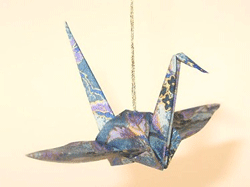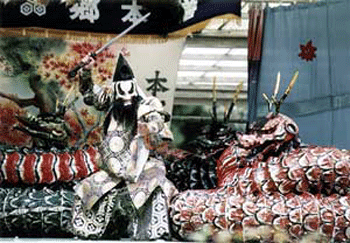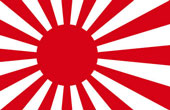Japanese Tea Ceremony: Everysingle thing that is used in a tea ceremony has a meaning. When preparing
to  welcome a guest into a tearoom, the host must think carefully about the
choice of each item, including the tools for making tea, the scroll to hang on
the tokonoma, and the flowers to decorate the room. So the host needs to have a broad knowledge of utensils and fine art, as well as a refined sense of aesthetics. That is why chado (the japanese term for the ceremony) is known as a total art that involves every aspect of Japanese life and culture. There is an important concept in chado known as "ichigo ichie". The literal meaning of the term is "one encounter in a lifetime." The philosophy behind it is that one should always do one's best when making tea for another, treasuring each encounter as a once-in-a-lifetime event. Chado does not have a single, clear-cut goal that one should try to attain, as the details of each occasion all depend on the particular people and things that are involved.
welcome a guest into a tearoom, the host must think carefully about the
choice of each item, including the tools for making tea, the scroll to hang on
the tokonoma, and the flowers to decorate the room. So the host needs to have a broad knowledge of utensils and fine art, as well as a refined sense of aesthetics. That is why chado (the japanese term for the ceremony) is known as a total art that involves every aspect of Japanese life and culture. There is an important concept in chado known as "ichigo ichie". The literal meaning of the term is "one encounter in a lifetime." The philosophy behind it is that one should always do one's best when making tea for another, treasuring each encounter as a once-in-a-lifetime event. Chado does not have a single, clear-cut goal that one should try to attain, as the details of each occasion all depend on the particular people and things that are involved.
Origami: is a traditional Japanese pastime where a single square of paper is folded in different ways to create shapes like cute animals and beautiful plants. Since it only takes a sheet of paper, the hobby can easily be enjoyed anywhere; many people in Japan enjoy it at home and at school. The best known origami shape, which many children learn from their parents or grandparents, is the crane. Other shapes include flowers, butterflies, crabs, and even difficult creations like Christmas trees. Origami is especially popular among girls.
folded in different ways to create shapes like cute animals and beautiful plants. Since it only takes a sheet of paper, the hobby can easily be enjoyed anywhere; many people in Japan enjoy it at home and at school. The best known origami shape, which many children learn from their parents or grandparents, is the crane. Other shapes include flowers, butterflies, crabs, and even difficult creations like Christmas trees. Origami is especially popular among girls.
Kagura: A form of music and dance dedicated to Shinto  gods. In the Kojiki and other ancient books that tell us about the mythology of Japan, there are stories of one god hiding within a stone and another god dancing to coax it out, and this is said to be the origin of kagura. Long ago, the Shinto priests who took care of the shrines were the only people allowed to perform kagura. Nowadays, though, many ordinary people enjoy this form of music and dance.
gods. In the Kojiki and other ancient books that tell us about the mythology of Japan, there are stories of one god hiding within a stone and another god dancing to coax it out, and this is said to be the origin of kagura. Long ago, the Shinto priests who took care of the shrines were the only people allowed to perform kagura. Nowadays, though, many ordinary people enjoy this form of music and dance.





 folded in different ways to create shapes like cute animals and beautiful plants. Since it only takes a sheet of paper, the hobby can easily be enjoyed anywhere; many people in Japan enjoy it at home and at school. The best known origami shape, which many children learn from their parents or grandparents, is the crane. Other shapes include flowers, butterflies, crabs, and even difficult creations like Christmas trees. Origami is especially popular among girls.
folded in different ways to create shapes like cute animals and beautiful plants. Since it only takes a sheet of paper, the hobby can easily be enjoyed anywhere; many people in Japan enjoy it at home and at school. The best known origami shape, which many children learn from their parents or grandparents, is the crane. Other shapes include flowers, butterflies, crabs, and even difficult creations like Christmas trees. Origami is especially popular among girls.